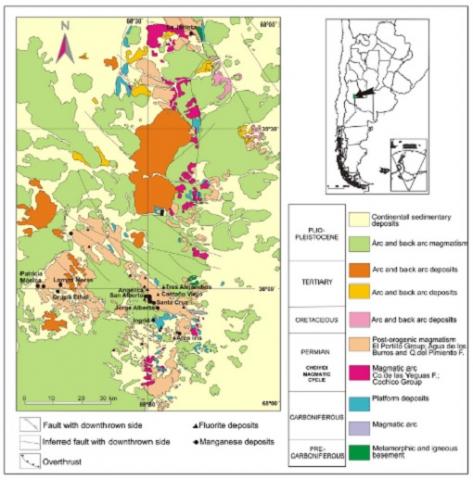Nora A. Rubinstein, Eduardo O. Zappettini
2 015
Ore Geology Reviews Volume 66, April 2015, Pages 334-343
The San Rafael Massif is characterized by widespread fluorite and manganese epithermal ore deposits whose origin has been under debate to the present. Isotopic (Sm/Nd and K/Ar) and geochemical (trace elements and REE) data of fluorite and manganese ore allowed to establish the age and genesis of the deposits and to propose a regional genetic model. The fluorite deposits were formed during the Upper Triassic–Lower Jurassic as a result of the Triassic rifting that launched a hydrothermal activity at regional scale. The hydrothermal fluids had low T and high fO2 with fluorine probably derived from a mantle source and REE scavenged from the volcanics of the Gondwanan Choiyoi Magmatic Cycle upper section. The manganese deposits were formed by oxidizing hydrothermal fluids that collected Mn from deep sources and also leached REE from the upper section of the Choiyoi Magmatic Cycle during two mineralization episodes. One episode was linked to the rift tectonic setting that remained active up to the Upper Cretaceous and the other was related to an Early Miocene back-arc extensional geodynamic setting. Both manganese and fluorite deposits were formed in extensional tectonic settings within an epithermal environment near the surface, and can be ascribed to the general model of detachment-related deposits.

